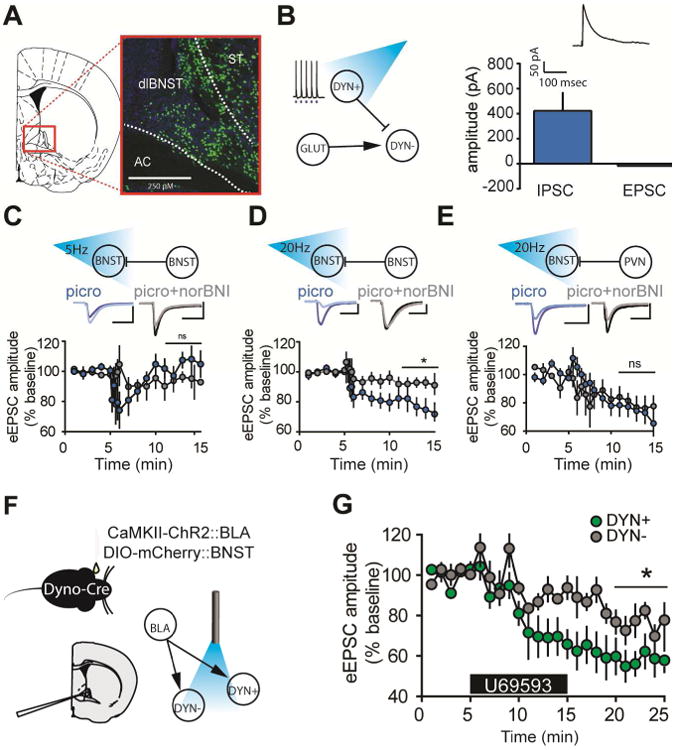Figure 4. Optogenetic activation of BNST Dynorphin neurons inhibits eEPSCs in nonChR2 expressing neurons, and KORs preferentially inhibit glutamate release onto DYN+ neurons.

(A) Localization of DYN+ neurons in the BNST. DYN+ cells were found throughout the dorsal BNST in a Dyn-L10-EGFP reporter mouse. (B) Left, local dynorphin cells showed reliable light evoked action potentials at 20 hz. These cells synapsed locally, producing a light-evoked IPSC of approximately 423 pA, but no light-evoked EPSC. (C) 5 hz stimulation of DYN+ neurons produced a significant transient change in eEPSC amplitude (paired t-test, baseline v. min. 5-8, t4 = 6.033, P < 0.05), which returned to baseline (paired t-test, baseline v. min 11-15, t4 = 2.474, P > 0.05). (D) 20 hz stimulation of local DYN+ neurons produces a significant and lasting inhibition of eEPSC (paired t-test, baseline v. min 11-15, t4 = 10.42, P < 0.001). This effect is partially blocked by norBNI (unpaired t-test acsf v. norBNI block, min 16-20, t8 = 10.59, P < 0.0001). (E) 20 hz optogenetic stimulation of PVN to BNST DYN+ neurons produces a significant inhibition of eEPSC (paired t-test, baseline v. min 11-15, t4 = 8.566, P < 0.001) but this was not significantly different from the inhibition seen when in the presence of the KOR antagonist norBNI (unpaired t-test, acsf+picrotoxin v. acsf+picrotoxin+norBNI, t8 = 1.191, P > 0.1). (F) Mice were injected with a cre-inducible mCherry (AAV5-EF1α-DIO-mCherry) to the BNST, and ChR2 (AAV2-CaMKIIα-ChR2-EYFP) to the BLA. Optogenetic activation of BLA-BNST DYN+ and DYN- neurons was then assessed. (G) Application of the KOR agonist U69,593 significantly reduced the BLA-BNST eEPSC amplitude onto both DYN+ (paired t-test, baseline v. min 21-25, t4 = 12.14, P < 0.001) and DYN- neurons (paired t-test, baseline v. min 21-25, t4 = 9.039, P < 0.001). However, the effect of KOR-mediated inhibition was significantly larger on DYN+ neurons as compared to DYN- neurons (unpaired t-test, DYN+ min 21-25 v. DYN- 21-25, t8 = 7.071, P < 0.001), indicating KOR activation in the BNST may preferentially inhibit BLA-DYN+ neurons. See also Supplemental Figures 1 and 2.
